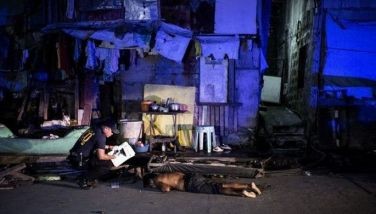‘New lockdowns to irreversibly injure economy’

MANILA, Philippines — Health Secretary Francisco Duque III yesterday ruled out placing the National Capital Region (NCR) again under stricter lockdown despite the continuing rise in cases of COVID-19, saying doing so would irreparably damage the economy.
“We can no longer afford to revert to higher quarantine status of MECQ or ECQ because that will irreversibly injure if not damage the economy beyond repair,” Duque said. MECQ or modified enhanced community quarantine is a relaxed ECQ.
Instead of lockdown, Duque stressed the importance of stricter implementation of contact tracing and other measures to prevent further transmission of the virus.
He said the national government is ready to provide the necessary support so each local government unit (LGU) can expand its testing capacity as well as its quarantine facilities.
Expanding quarantine facilities, he said, would enable LGUs to manage the spread of the virus without the need to impose lockdown that could only further hurt the economy.
Duque said the DOH is looking at three to four percent coverage in every city or municipality.
“It’s harder if there are many plans. Let’s choose activities that we really need to do or are necessary to effectively lower the clustering or increase in COVID cases,” Duque explained.
“We must crush the clusters,” he said. “It’s not enough to say, ‘it’s OK, cases are going down.’ What’s needed is to crush the clusters, and this will start in the barangays,” he explained in Filipino and English.
Yesterday, the DOH recorded an additional 3,637 cases, bringing to 213,131 the total number of COVID cases nationwide.
Of the newly recorded cases, 84 percent or 3,063 occurred within the recent 14 days and 54 percent or 1,648 came from the NCR or Metro Manila.
Additional 655 recoveries pushed to 135,101 the number of patients who recovered from the infection.
The DOH has also reported that total number of COVID-related deaths rose to 3,419 with the addition of 94 mortalities. More than half or 54 newly recorded deaths came from NCR and 81 percent of the total number occurred in August. According to Duque, the country has maintained a low COVID mortality rate.
“We have saved many lives, that is why we are extremely proud of the progress we have made,” Duque said.
The DOH has launched the Coordinated Operations to Defeat the Epidemic (CODE) aimed at providing support for LGUs with limited capabilities to mitigate localized transmission of COVID at the community level.
CODE is also intended to provide support to micro, small and medium enterprises (MSMEs) affected by the pandemic.
Experts from the University of the Philippines, meanwhile, said they would not recommend a shift to modified general community quarantine (MGCQ) in Metro Manila from GCQ as hospitals are still full.
“Right now we cannot recommend that because our hospitals are still full for us to shift to MGCQ,” UP mathematics professor Guido David said in Filipino in a radio dzBB report yesterday.
“The moment we shift to MGCQ, we might experience what happened when we first shifted to GCQ,” he added, referring to the surge of cases after Metro Manila relaxed its quarantine protocols in June.
David, a member of the OCTA Research Team that regularly releases case projections on the pandemic, said authorities must first observe and evaluate the impact of the recent return to GCQ before opening additional economic sectors.
“It is better to retain the GCQ and wait for the cases to go down,” he added.
In its latest case projections, OCTA Research said the number of COVID-19 cases in the country may rise to 330,000 to 375,000 by the end of September.
David explained that the “flattening of the curve” that they have observed in the country does not mean that there will be no new cases.
“While the number of cases is decreasing, we still have a lot of new cases. The pandemic is not over. Flattening the curve does not mean that there will be no new cases, it only means that these are decreasing,” he added.
He said the projection is based on the current trajectory and the actual number of cases may even be lower if the country succeeds in further limiting the transmission of the virus.
“That is the trajectory, where we are going if there are no major changes,” said David.
In an interview with The Chiefs aired on One News/TV 5 on Aug. 26, David said it would take several months to bring down the average number of new cases in the country, particularly in Metro Manila where most cases are reported.
He urged the public to maintain the momentum to prevent a resurgence of cases.
“This is just the start of the recovery period, it will take us a while to get down… to 1,000 cases,” he said. “We have to remain cautious and be on the conservative side of this pandemic… We should try to maintain this momentum.” — Janvic Mateo
- Latest
- Trending




























